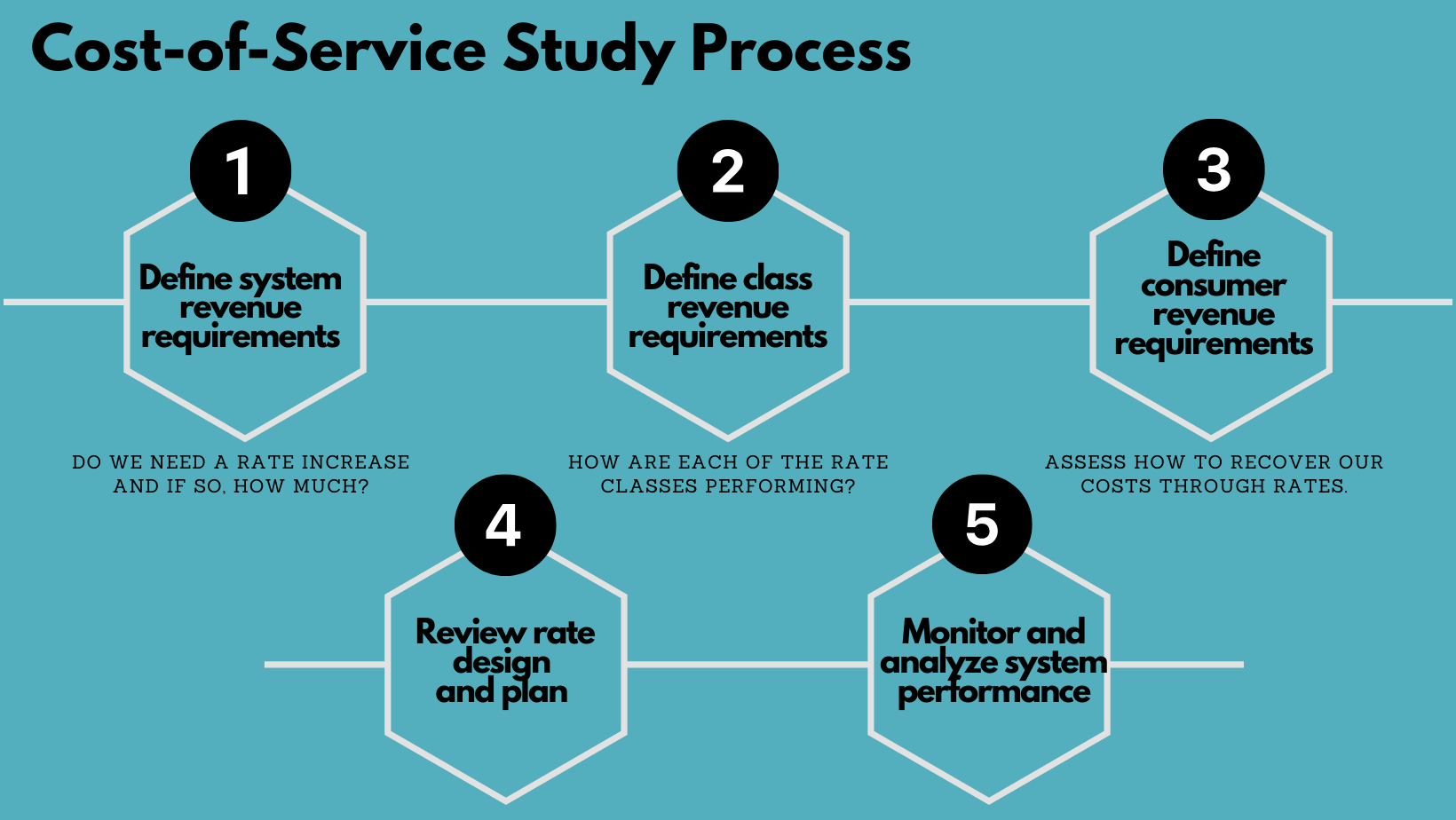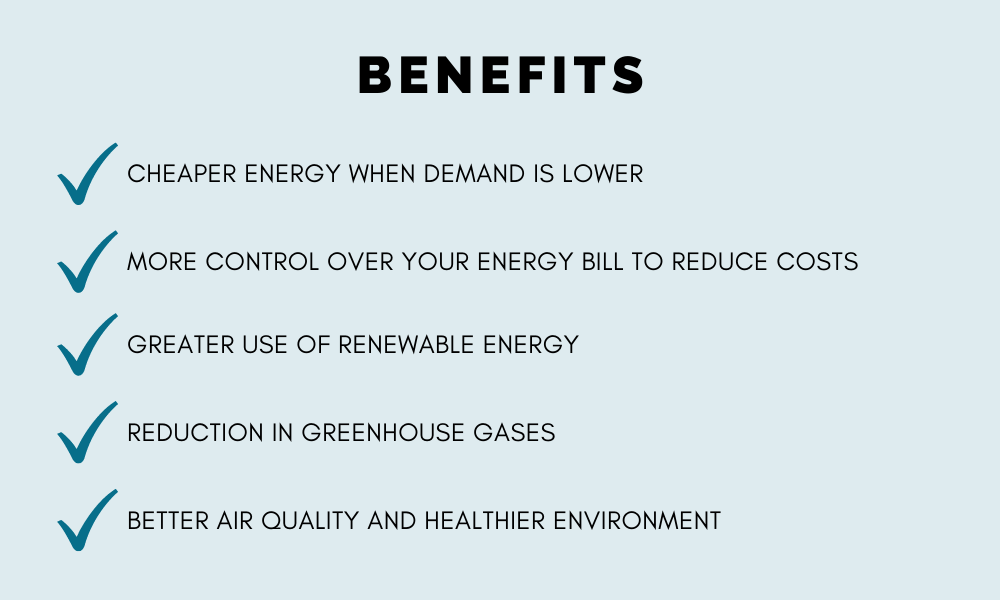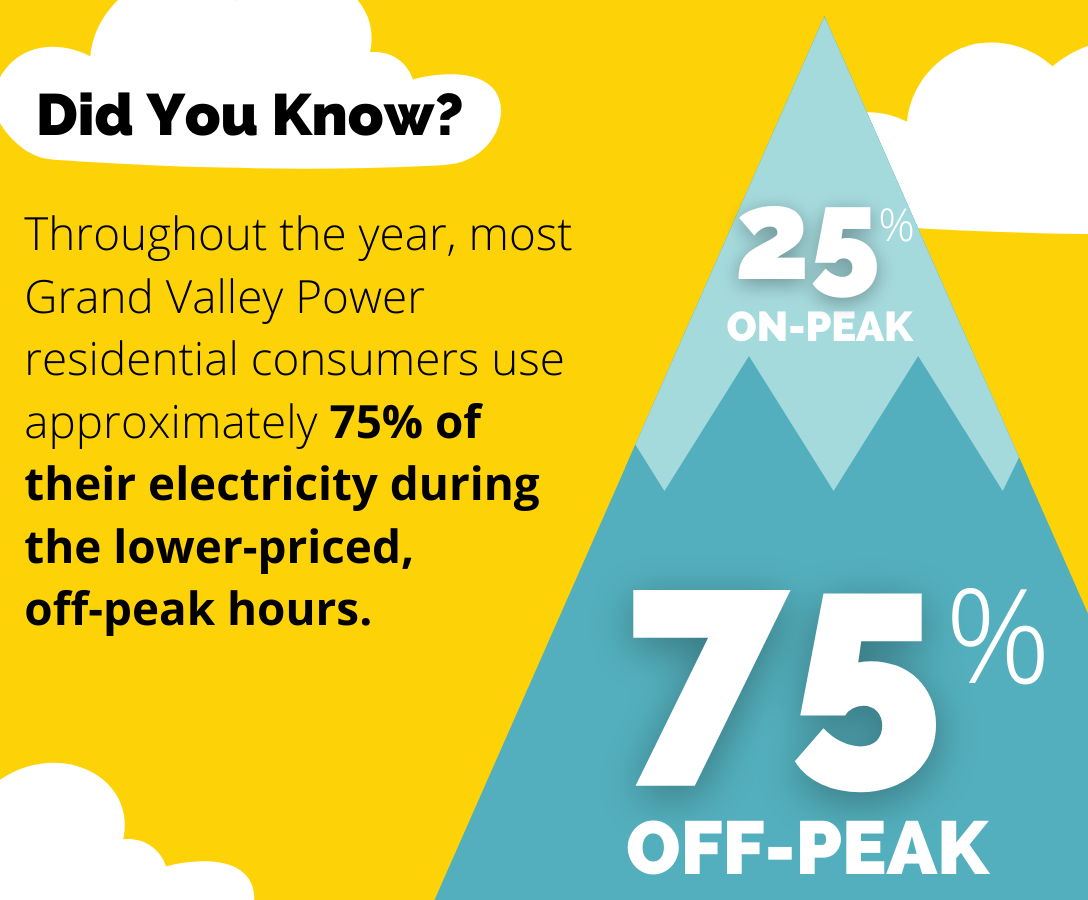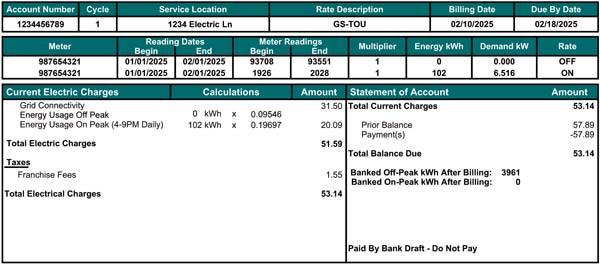+ More about determining rates
GVP’s rates are very competitive in comparison with other Colorado cooperatives. According to the July 2024 Colorado Association of Municipal Utilities residential rate study, our cost for an average 700-kWh electric bill is $108.93. That is the sixth lowest in the State in comparison against other reporting Colorado co-ops. You can see average utility costs in Colorado on the Colorado Association of Municipal Utilities website.
GVP’s Board of Directors set the cooperative’s electric rates. Directors are GVP members who pay the same rates as you. They are elected by you and other members each year. Directors want to ensure electric rates are adequate to maintain the health of Grand Valley Power, provide the necessary revenue for delivery of reliable electric service and avoid the subsidization between rate classes. Alongside employees at the co-op, together we ensure we maintain the long-term financial health of the cooperative.
GVP’s member-elected Board of Directors is responsible for ensuring electric rates are adequate to maintain the cooperative’s financial health and that electric rates are fair and equitable among rate classes.
GVP’s Board of Directors hires a third-party independent consultant to conduct a Cost-of-Service Study (COSS) every few years. The COSS fairly and equitably breaks down the costs of providing service to each rate class. Each rate class has unique service characteristics that impact the costs for that class. The COSS findings offer useful insight to assist the board in responsibly allocating costs to each class of members in a way that avoids any class paying more than their fair share.

+ All About Time-of-Use
With the Time-of-Use rate, you pay different prices for electricity based on the time that you use it.
- You will receive lower rates during “off-peak” hours when overall energy demand is lower and more renewable energy is available (before 4:00 p.m. and after 9:00 p.m.).
- Electricity prices will be higher between 4:00 p.m. and 9:00 p.m. when the sun sets and less renewable energy is available to meet the “peak” in evening energy demand.
With TOU rates, you are more in control and have greater flexibility over your bill because you can shift your electricity use to times when it costs less. With a traditional rate that stays consistent across the day or night, the only way to save money is to not use electricity at all.
The Time-of-Use rate gives you more control over your electric bills and offers opportunities to save money by shifting energy use away from the peak hours (4-9 p.m.) when power costs more. (For example, you can change the time of day that you do laundry or run your dishwasher.)
You can also save money if you reduce your overall energy use. Consider unplugging small household appliances, or installing smart power strips or ENERGY STAR-rated appliances and equipment. Additionally, the Time-of-Use Rate saves the cooperative money by reducing our system peak load, decreasing power costs; savings that we pass through to all members.

General Service - Time-of-Use (GS-TOU) is available to all types of usage, including single-family homes, individual apartments, farms, or common residential units. The rate is limited to consumers whose load requirement does not exceed 50 kW and who have individual pumps with capacity up to 10 horsepower.
All commercial small power and large power members will have a three-part rate that includes a demand component. Please refer to our three-part rate demand rates for more information.
For all other rates, please refer to the rates and tariffs section of our website for additional information. For additional details on requirements or eligibility for different rate classes, please see our rates and tariff sheets: gvp.org/rates
To make it simple and easy to remember, on-peak hours (or the highest cost/rate) occur every day during the same five-hour window: 4 p.m. to 9 p.m.
Off-peak hours are every day from 9 p.m. to 4 p.m. the next day.
This stays the same year-round, including weekends and holidays, and does not change seasonally.
Your electricity usage charges will be based on the rate that applies to the time period when usage occurred: off-peak and on-peak. You'll see this as individual line items for your current electricity use each month. It is important to keep in mind as you review your bill:
- The cost of fuel that is used to generate power will continue as a pass-through (noted as Power Cost Adjustment) on each bill. The cooperative does not make any additional revenue from this item. This will fluctuate on a monthly basis and typically is not greater than $0.005.
The best way to review your past energy usage is to check out SmartHub, our secure account management portal.
Visit our SmartHub webpage 24/7 to get started or log in:
- Click Usage
- Click Usage Explorer
- Choose your Date Range, Interval, and Type: Time of Use.
- Look for the Green Button - Download My Data
- Analyze using hourly data measure across high and low use months (high use months normally are Summer or Winter like July, June, August or November, December and January).
Another option is to call us at 970-242-0040 and our member services team will provide you an estimated percentage of on-peak use and off-peak use based on your account history.
A big misconception we often hear is that a member household feels their energy consumption is 50% on-peak. This simply is not true. What is true, is that most residential consumers see approximately 25% of their energy consumption during peak periods and 75% of their electricity is used during the lower-priced off-peak hours.

Prepay account balances update daily, depending on the amount of kilowatt-hours (kWh) used. Low balance notices are sent based on your preferences. The system defaults to a seven-day low balance notice based on your usage.
Grand Valley Power offers a free program that makes it easier to budget your expenses in a given month. We spread your payments evenly throughout the year over an 11- month period, and on the 12th month, we determine a debit or credit, based on your actual usage. Budget Billing lessens the impact on your budget during the winter and summer months when energy use is likely higher. So, despite unpredictable swings in the weather and your usage, your utility bills are still predictable. If you have no outstanding or delinquent amounts owed to GVP and have at least one year of electric use history, you are eligible for the budget billing plan.
If you are interested in this program, please call us at (970) 242-0040 to enroll.
The Electric Vehicle - Time-of-Use rate (EV-TOU) is available to all residential consumers who own a qualified Electric Vehicle that is charged on the served premises. (Vehicles registered to a business are not eligible for the EV-TOU rate.) The rate is limited to consumers whose load requirement does not exceed 50 kilowatts and is a single-phase service.
Vehicles must be plug-in (PHEV) or all-electric vehicle (BEV). Your current DMV registration for the electric vehicle is required. Members on this rate must maintain an active SmartHub account.
This Time-of-Use rate includes periods of higher-priced on-peak kilowatt-hours (kWh) and lower-priced off-peak kWh. The EV Charging period is from 11 p.m. to 7 a.m. daily.
- On-Peak Hours: 7 days a week, year-round between 4:00 pm and 9:00 pm;
- Off-Peak Hours: 7 days a week, year-round between 7:00 am to 4:00 pm., and 9:00 pm to 11:00 pm;
- EV Charge Hours: 7 days a week, year-round, between 11:00 pm and 7:00 am.
To sign up, visit our Electric Vehicle TOU web page.
Call us with any questions about your electric vehicle application or rate at (970) 242-0040.
For net-metering members, the GEN-1 tariff provides for two banks of kWh. Your meter accounts for consumption and production according to the on-peak and off-peak periods. The on-peak register tracks the net result of your production and consumption from 4:00 pm to 9:00 pm each day throughout the month. The off-peak register tracks the net result of your production and consumption from 9:00 pm to 4:00 pm the following day. On your bill statement, you will see two banks of kWh tracked separately from month to month. Banks are settled annually during the month of April.
Example Bill below (final bill may appear differently):

Members benefit the most from lower pricing when you can shift your usage to off-peak hours. Scheduling irrigation pumps to run outside of on-peak time is ideal. If this is not an option or you must irrigate during peak time, try to reduce the amount of time. Irrigation members also have a slightly different rate price: gvp.org/rates.
+ Managing Your Energy
Shifting your electricity use to off-peak times (doing your laundry or running your dishwasher) and reducing your overall usage (turning off your TV when you’re not watching or using your grill instead of your oven) can help you control your electric bills. You’ll help defer the need to build more power plants, generate power from expensive fuel sources or spot market pricing from sources that are less environmentally friendly.
Using energy-saving technologies like smart thermostats or power strips can also help you save on electricity costs. Check out our online Home Energy Adventure audit and calculators to get personalized recommendations on ways to save.
We also provide a robust account management portal called SmartHub. It does more than allow you to pay bills online or report outages. SmartHub also provides you hourly and daily energy use, so that you can make simple changes before your bill arrives. While you're exploring your energy, you can also setup notifications like Power Usage Alerts that notify you when a power threshold has been passed or is too low. Find out more about SmartHub here: gvp.org/SmartHub
We have suggestions to help you stay comfortable while conserving energy and saving money.
- Start or program your dishwasher, washing machine or clothes dryer to run and finish before 4 p.m. or start after 9 p.m.
- Wash full loads of laundry whenever possible and switch your temperature setting from hot to warm to cut energy use in half for a single load. Using the cold cycle can reduce energy use even more. About 90% of the energy consumed for washing clothes is used to heat the water.
- Try to avoid using multiple appliances like your dishwasher, air conditioner and washer and dryer at the same time between 4 p.m. and 9 p.m., when rates are highest.
- If you need to use your air conditioner during peak hours, try setting your thermostat a few degrees higher between 4 p.m. and 9 p.m. You can save 3 to 5% on your cooling costs for each degree you raise the temperature on your thermostat.
- Keep your kitchen cool and make meals that don’t require your oven. Use your grill or small appliances to cook food. Small appliances like microwaves, toaster ovens and pressure cookers, use about 66% less energy than a conventional oven.
- Gaming systems are fun but also use a lot of energy. Give your system a rest from 4 to 9 p.m. Activate power saving settings and turn off controllers when not in use. Learn more at energystar.gov.
The easiest way to keep your home cool is to prevent it from heating up in the first place. Good insulation, caulking and weather stripping help regulate the temperature inside. Shade trees, overhangs and awnings help, too.
Here are some no-cost and low-cost conservation tips from energy.gov:
Air conditioning / cooling
- Set the thermostat to 78 degrees or higher. You can save as much as 10% a year on heating and cooling by simply turning your thermostat back 7°-10°F for 8 hours a day from its normal setting. Consider bumping this up to 85 degrees when you are at work or away on vacation.
- Adjust ceiling fans to turn counter-clockwise in the summer.
- Use fans instead of central air conditioning whenever possible. A fan costs about 90% less to operate.
- Change the air filter regularly. An air conditioning unit with dirty filters can use 5-10% more energy. In general, HVAC system air filters should be replaced once a month. However, since there are different types of filters, you should check your manufacturer’s recommendation regarding replacement. You can find your filter in the return air register (may be on the wall or ceiling) or on the HVAC unit itself.
- Clean the condenser coils. Make sure your AC system is off at the thermostat. Then, clean the outdoor coils with a garden hose by gently washing in a downward angle (only if on the ground). For a deeper clean, you can spray the coils with a mild cleaning solution and let it sit for 10 minutes before rinsing.
- Clean the evaporator coils. This is quite easy and can be done in 5 steps:
- Turn off your AC system.
- Mix warm water and a mild cleaning solution.
- Open the panel with the evaporator coil in it.
- Spray the cleaner on the coils and let it sit for about 5 minutes.
- Gently wipe away dirt and debris with a soft cloth.
Appliances
- Use your oven, stove, dishwasher, dryer, washing machine and other heat-producing appliances early in the morning or later in the evening, when temperatures are cooler.
- Get rid of your older-model refrigerator or freezer, especially if you have an extra one in your garage.
Cooking
- Using your oven can quickly increase the temperature in your kitchen, especially if whatever you’re cooking means you have to repeatedly open the oven door. To reduce kitchen heat, consider eating meals that can be prepared without the oven, or with smaller appliances such as a microwave, slow cooker or toaster oven. Consider grilling during those nice summer nights.
- Microwaves use less than half the power of a conventional oven. Consider using your microwave to cook or reheat your dinner during peak hours.
You can find additional ways to save here: gvp.org/energy-efficiency
For every two degrees that you lower your thermostat during the winter, you save about 10% on the operating cost of your heater.
Here are some cool-weather conservation tips from energy.gov:
Heating
- Set the thermostat to 68 degrees, and lower it to 60 degrees at night or when no one's home.
- Program your thermostat so you don't have to remember to change the setting.
- If you have a heat pump, set the lower temperature to 63 degrees. Heat pumps are designed to maintain temperatures within a narrower range.
- Have a licensed HVAC contractor check your ducts if you notice little or no air coming out of vents, or if some rooms are colder than others.
- Get your heating system professionally checked once a year, and change the air filters regularly.
- Keep vents open and air flowing. Closing doors and room vents puts extra strain on the central heating system.
Appliances
- Use portable heaters only in rooms that don't get enough heat, or if your home doesn’t have a central heating system. Remember to turn them off when the room’s not in use.
- Never use propane heaters, hibachis, barbecues—or any heater with an open flame—indoors. They produce carbon monoxide, a clear, odorless gas that can be fatal to humans and animals.
Weatherization
- If your house is more than 15 years old, check the insulation in the attic and floor.
- Check the weather stripping and caulking around doors and windows. Up to 20% of the heat or cool air inside a typical house is lost through the windows.
- Curtains or blinds can act as additional insulation for windows, or can be opened to let in the sun’s heat.
Lighting
- Consider replacing any incandescent bulbs or compact fluorescent lights (CFLs) in your home with energy-efficient LEDs.
- Install light-sensitive controls or timers to automatically turn off lights when they're not needed.
- Choose solar-powered lights for your yard.
- Use desk lamps to focus the light where you actually need it, rather than wasting energy lighting the entire room.
- When decorating your home for the holidays, consider ENERGY STAR rated lighting, LED's and timers to shut off lights after a period of time.
More ways to save
- Open drapes and shades on sunny days to let in the sun's heat; close them at night and on cloudy days.
- Cover your fireplace and close the damper when you're not using it.
- Dress in layers and add a blanket to your bed.
You can find additional ways to save here: gvp.org/energy-efficiency
